Longleaf Pine Tree
- November 28, 2024
- 0 comment
The Longleaf Pine Tree (Pinus palustris) is a keystone species in many southeastern U.S. ecosystems. Revered for its ecological importance, the Longleaf Pine plays a vital role in supporting biodiversity and maintaining soil stability.
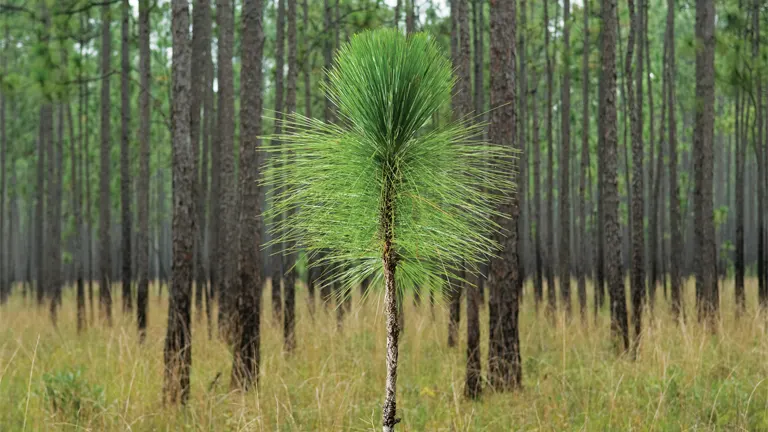
Its towering stature and unique growth pattern make it a defining feature of the landscapes it inhabits, often forming lush pine savannas. Once covering over 90 million acres, these trees now occupy only a fraction of their historic range, making conservation efforts critical.
What Is a Longleaf Pine Tree?
The Longleaf Pine Tree, known scientifically as Pinus palustris, belongs to the family Pinaceae. It is distinguished by its remarkable height, often reaching up to 80–100 feet, and its long, glossy, dark-green needles that can extend up to 18 inches.
Main Characteristics and Interesting Facts:
- Leaves: Needles grouped in bundles of three, giving the tree a lush, feathery appearance.
- Bark: Thick, scaly, and reddish-brown, providing excellent protection against wildfires.
- Flowers: Produces small, inconspicuous male and female flowers on the same tree, which later develop into large woody cones.
- Lifespan: Often exceeding 300 years under ideal conditions.
- The tree’s taproot can grow over 10 feet deep, enabling it to access groundwater in dry conditions.
- Longleaf Pine ecosystems are fire-dependent, thriving in areas with frequent, low-intensity fires.
- Historically, its resin was a primary resource for the naval stores industry, producing turpentine and pitch.
Three Different Types of Longleaf Pine Tree Species
The Longleaf Pine (Pinus palustris) is not subdivided into multiple species but exists as a single species with variations in size and growth patterns influenced by environmental conditions. However, it coexists with other pines in its range, such as:
Loblolly Pine (Pinus Taeda)
Faster-growing but less fire-tolerant.
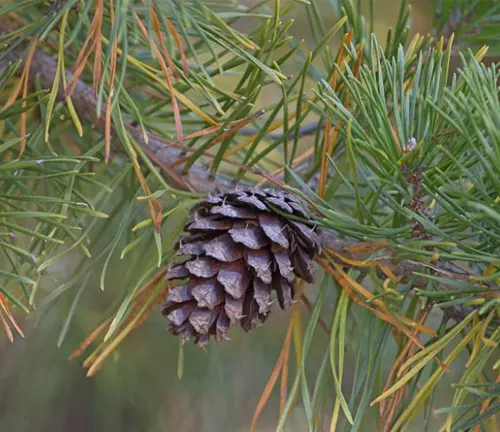
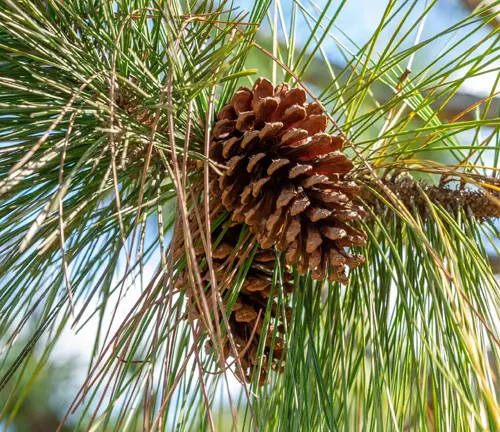
Slash Pine (Pinus Elliottii)
Found in wetter areas and valued for timber.
Shortleaf Pine (Pinus Echinata)
Adapted to more rugged upland terrains.
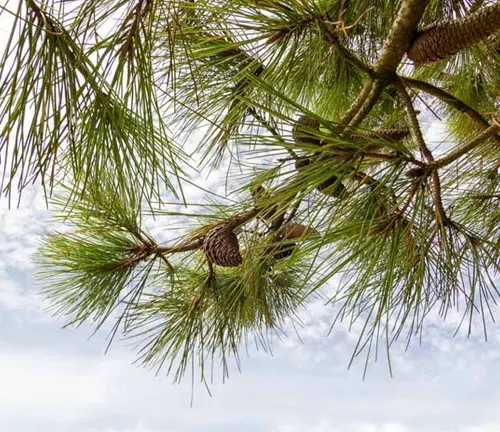
These neighboring species often overlap in distribution, creating diverse pine ecosystems with distinct ecological dynamics.
Where Do Longleaf Pine Trees Grow?
Longleaf Pine trees are native to the southeastern United States, thriving from Virginia to Texas. They dominate sandy, well-drained soils, often in flatwoods, savannas, and coastal plains.
- Soil Stabilization: Their extensive root systems prevent erosion, especially in sandy soils.
- Biodiversity Hotspots: Longleaf Pine forests host over 30 endangered plant and animal species, such as the red-cockaded woodpecker and gopher tortoise.
These trees prefer subtropical climates with warm temperatures and periodic rainfall. They exhibit remarkable resilience to environmental stressors like fire and drought.
How to Grow and Care for Longleaf Pine Tree
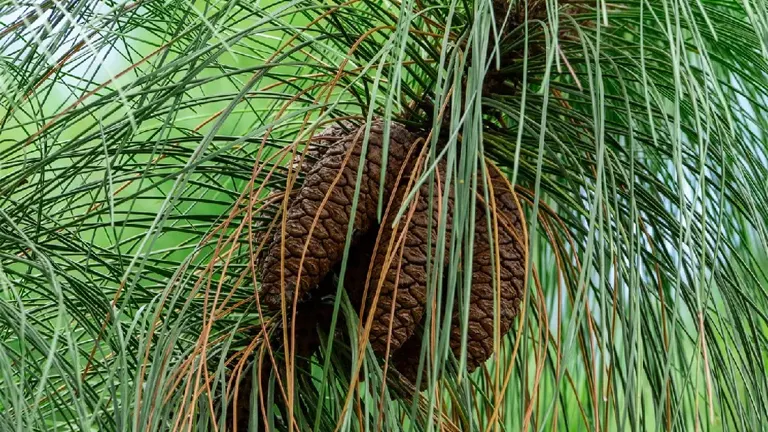
- Soil: Prefers well-drained, sandy soils with low organic matter.
- Water: Moderate water needs; drought-tolerant once established.
- Sunlight: Thrives in full sunlight.
Propagation and Maintenance Tips:
- Seeds: Sow in late fall or early spring in sandy, nutrient-poor soils.
- Transplants: Use container-grown seedlings for better survival rates.
- Regular pruning is unnecessary, but damaged or diseased limbs should be removed.
- Apply a layer of mulch to retain soil moisture during the tree’s early growth stage.
- Protect young saplings from pests like pine tip moths.
Ecological Benefits of Longleaf Pine Tree
Longleaf Pines are ecological powerhouses. They:
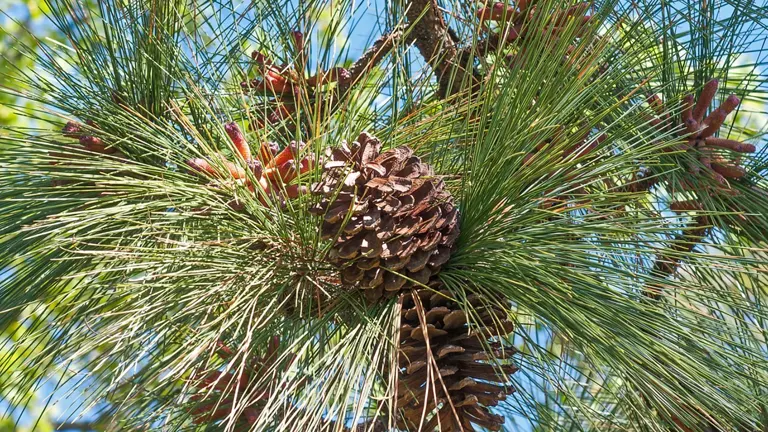
- Enhance soil health by adding organic matter through needle drop.
- Prevent erosion with their deep root systems.
- Act as carbon sinks, mitigating climate change.
- Provide shelter and nesting sites for diverse wildlife, including rare species.
Longleaf Pine Tree Flowering and Pollination
The Longleaf Pine flowers in spring, with male cones producing pollen and female cones developing seeds. Pollination is wind-driven, and mature cones take 18–20 months to release seeds. These seeds are a food source for birds, squirrels, and other wildlife.
Is Longleaf Pine Tree Drought-Tolerant?
Yes, Longleaf Pine trees are highly drought-tolerant. Their deep taproot system allows them to access groundwater during dry periods. This makes them ideal for arid regions or areas with sporadic rainfall.
Longleaf Pine Tree and Wildlife Interactions
Longleaf Pine ecosystems are lifelines for many species. Key interactions include:
- Shelter: Red-cockaded woodpeckers carve nests in old trees.
- Food: Gopher tortoises and deer feed on grasses that thrive beneath Longleaf Pines.
- Symbiosis: Mycorrhizal fungi associate with the tree’s roots, improving nutrient absorption.
Conclusions
The Longleaf Pine Tree (Pinus palustris) is more than just a tree; it’s a cornerstone of southeastern U.S. ecosystems. Its resilience, ecological benefits, and cultural significance highlight the need for conservation efforts to restore its diminished habitats. By planting and protecting Longleaf Pines, we safeguard biodiversity and ensure a healthier environment for future generations.
Frequently Asked Questions (FAQs)
- What is the scientific name of the Longleaf Pine Tree?
The scientific name is Pinus palustris. - Where does the Longleaf Pine Tree grow?
It grows in the southeastern United States, thriving in sandy, well-drained soils. - How tall can Longleaf Pine Trees grow?
They typically reach 80–100 feet in height. - What makes the Longleaf Pine important for ecosystems?
It supports biodiversity, prevents erosion, and provides habitats for wildlife. - Is the Longleaf Pine drought-tolerant?
Yes, it has a deep taproot that helps it survive dry conditions. - What is the lifespan of a Longleaf Pine Tree?
It can live over 300 years under ideal conditions. - How can I grow a Longleaf Pine Tree at home?
Use well-drained soil, full sunlight, and plant seeds or saplings. - What wildlife relies on Longleaf Pines?
Species like red-cockaded woodpeckers and gopher tortoises depend on it for food and shelter.
We hope this guide has highlighted the importance of the Longleaf Pine Tree (Pinus palustris). Have thoughts or experiences with its conservation? Share below to inspire others. Don’t forget to share this guide to support efforts in preserving this vital species.


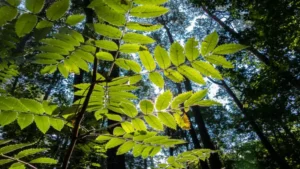
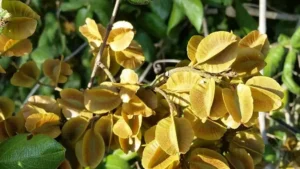
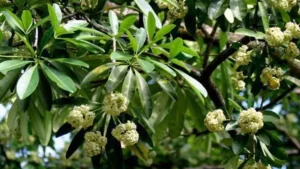






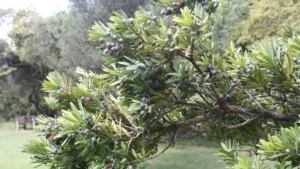
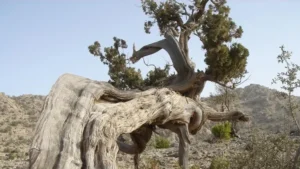

Leave your comment